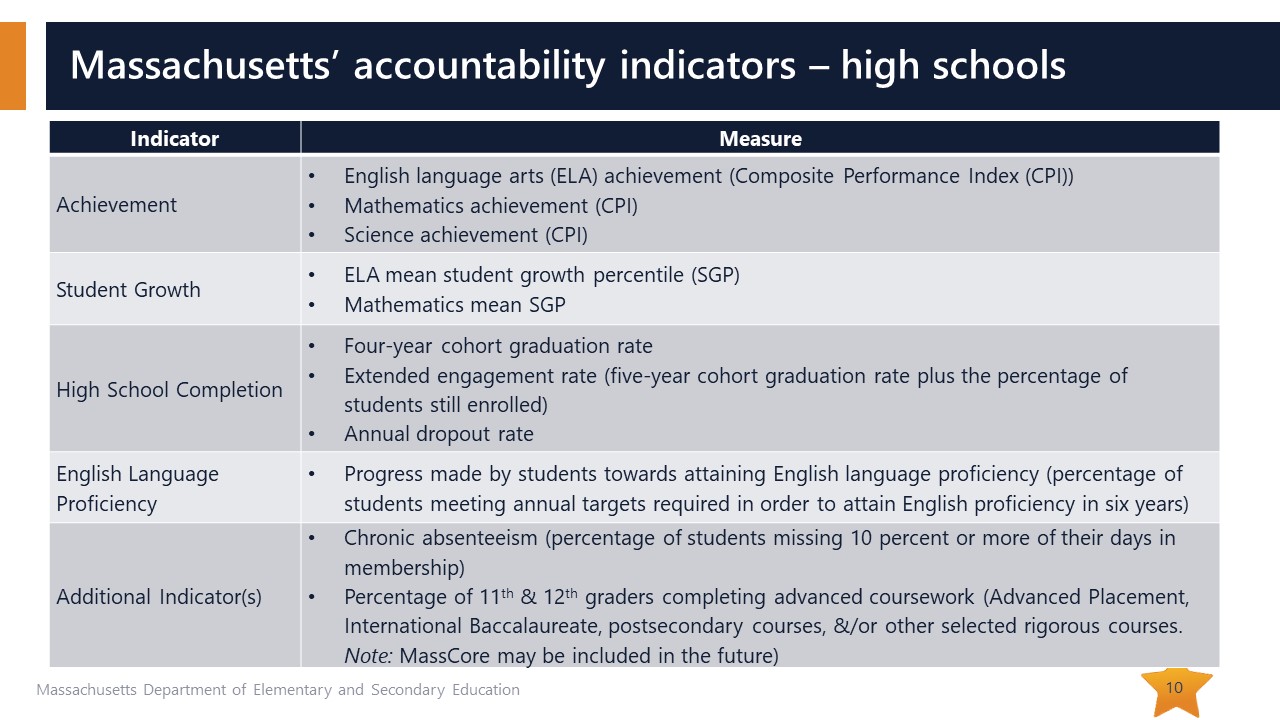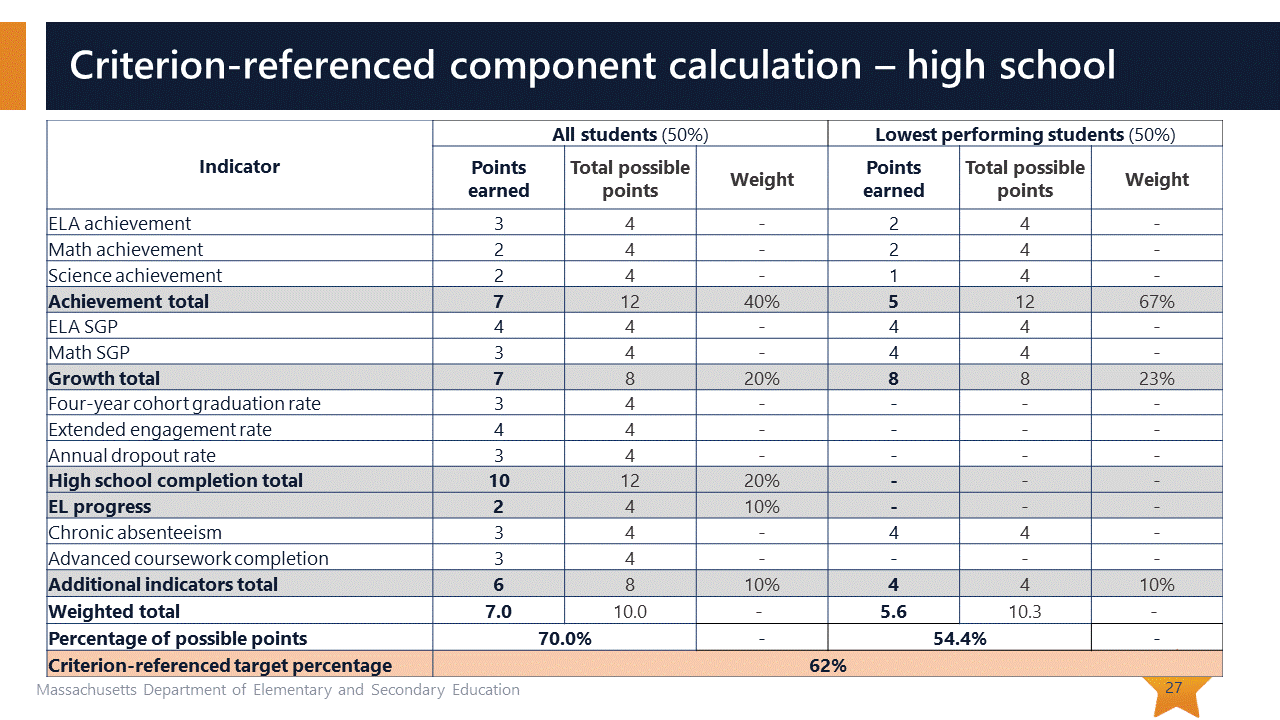
Search
Public Policy Updates: May 2018 Board of Education on Accountability
- Details
- Published on Wednesday, 23 May 2018 10:29
The Board of Elementary and Secondary Education conducted their May meetings in two parts: a May 14 evening update on the accountability provisions, and a May 22 morning meeting to conduct their regular business and honor their outgoing student representative. The following covers the first meeting.
The Board plans to vote on the updated accountability regulations, as well as the accountability system itself, at their June meeting. Thus their May meeting, the video of which can be viewed here, was the final update prior to the vote. The presentation is available for you here. Per Assistant Commissioner Russell Johnston, the intent is to lay out a system that "meaningfully differentiates the progress schools are making" while also determining how assistance can be provided to the schools most in need of it.
As has been discussed in prior meetings, the inputs to the system are broader than they were in the past, adding progress of ELL students, chronic absenteeism, plus graduation indicators and completion of advanced coursework at the secondary level to the achievement and growth in the MCAS of the past. The weighing for high schools and for non-high schools is proposed as follows:


There was concern expressed at the meeting around equity and access issues on advanced coursework; the Department thus making certain to look beyond Advanced Placement courses.
Member Edward Doherty recalled conversations over the course of the planning that included other indicators; the school and districts report cards likewise are being revamped, and those will include a number of additional indicators, including such things as access to the arts. Commissioner Riley, when asked for his impression, noted that he's coming to a plan that is largely already written, but also noted his own emphasis on growth and on the arts even in his interview before the board. The intent is for the new school and district report cards to come out by the end of this calendar year.
The balance of normative evaluation of schools (against each other) versus criterion evaluation of schools (against themselves) was also discussed at some length; Associate Commissioner Rob Curtin said, "Generally speaking...it's going to be about how schools are improving, as opposed to what their overall achievement is." There is a strong focus on bringing up the groups that are underachieving in all indicators, and to ensure that gap closure is due to the lower end coming up rather than the top coming down. Thus the lowest performing twenty percent of students in each of the above will make up half of the criterion referenced evaluation, as follows:


The models the Department has run has indicated that about 15% of schools would require intervention; this would include both the underperforming and chronically underperforming schools (per Mass General Law) and schools and districts with low participation, low percentiles within the normative system, low performing subgroups, and low graduation rates. As the federal regulation requires intervention in any school that has a graduation rate of 66.7% of less, this will necessarily include alternative schools; "our hands are tied," as Curtin said, adding that the requirement that such schools submit a plan might well be a plan that says they'll continue their mission to provide alternative education to those in need of it.
Schools and districts will no longer have levels. There will be schools and districts declared "in need of intervention," as above. All others would either be meeting targets, partly meeting targets, or not meeting targets. Next year, all schools and districts will either be partly meeting targets or meeting all targets which will be set for a single year. Districts, rather than being tagged by their lowest performing school, will now have their own calculation, as if the district is a single large school.
The Board is set to vote on these changes on June 26.

